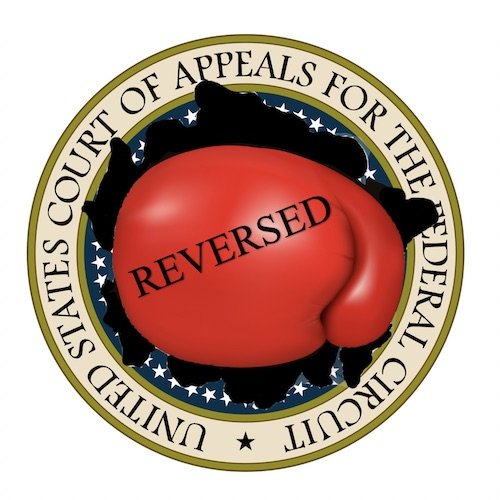“The place, as right here, ‘a publication’s goal is “dialogue with the supposed viewers,” that goal signifies public accessibility.’” – CAFC
On February 8, the U.S. Courtroom of Appeals for the Federal Circuit issued a precedential determination in Weber, Inc. v. Provisur Technologies, Inc. that vacated rulings by the Patent Trial and Attraction Board (PTAB) nixing validity challenges by American grill maker Weber towards Provisur’s industrial meals slicer patent claims. The Federal Circuit reversed the PTAB on declare development and in addition discovered that the Board misapplied CAFC precedent on the extent of public dissemination required earlier than printed publications can qualify as prior artwork.
Weber filed petitions for inter partes assessment (IPR) proceedings on the PTAB to problem the validity of claims from two Provisur patents asserted towards Weber in district court docket infringement litigation. These patents, each titled Excessive Velocity Slicing Machine, are U.S. Patent No. 10625436 and U.S. Patent No. 10639812. Weber challenged claims of each patents for obviousness based mostly on combos of U.S. patent filings and working manuals that had been distributed by Weber to clarify the operation of its industrial meals slicers to prospects.
PTAB Reverses Course on Public Availability of Prior Artwork Working Manuals
Upon establishment, the PTAB concluded that the corporate’s working manuals had been sufficiently obtainable to the general public to qualify as a previous artwork printed publication. Nevertheless, within the remaining written choices terminating these IPRs, the PTAB as a substitute discovered that Weber was too restrictive of its working handbook, which had solely been distributed to 10 distinctive prospects. Additional, the Board discovered that the general public availability of Weber’s working manuals was restricted topic to sure confidentiality restrictions, together with mental property provisions and copyright notices printed throughout the manuals. Even when the working manuals certified as prior artwork, the PTAB nonetheless discovered that the mixture of prior artwork references didn’t disclose the “disposed over” and “cease gate” declare limitations in Provisur’s patents.
On enchantment, the Federal Circuit discovered that the PTAB’s misapplied case legislation precedent on public accessibility stemming from the appellate court docket’s 2009 determination in Cordis Corp. v. Boston Scientific Corp. In that case, the Federal Circuit discovered that educational monographs describing intravascular stents didn’t qualify as prior artwork printed publications because of low distribution in addition to the affect of educational norms, which created an expectation that the monographs would stay confidential following distribution to a couple educational colleagues and potential industrial companions.
As defined by the Federal Circuit, Cordis is quickly distinguishable from the current enchantment. Whereas the holding in Cordis was motivated by educational confidentiality norms, Weber’s working manuals had been moderately supposed for dissemination to members of the general public interested by sustaining and troubleshooting Weber’s industrial meals slicers. “The place, as right here, ‘a publication’s goal is “dialogue with the supposed viewers,” that goal signifies public accessibility,’” the Federal Circuit concluded.
Not solely did skilled testimony present that Weber distributed working manuals with gross sales of every industrial meals slicer, however that members of the general public may acquire manuals from Weber staff upon requests. In footnotes, the Federal Circuit added that there was no minimal variety of events of entry that was dispositive to the general public accessibility inquiry, and that the excessive value of the slicers themselves didn’t render the working manuals sufficiently inaccessible.
IP Provisions Inside Working Manuals Do Not Create Confidentiality Restrictions
In reaching its opposite discovering, the PTAB positioned an inordinate emphasis on mental property provisions that the Board interpreted as confidentiality restrictions. The Federal Circuit discovered that the copyright discover permits authentic house owners of Weber’s industrial meals slicers, in addition to their personnel, to repeat the handbook for inside use. Proof additionally confirmed that Weber instructed authentic house owners to switch their working manuals when promoting their slicer to 3rd events, additional proving the general public dissemination of these supplies.
Having handled the prior artwork printed publication situation, the Federal Circuit went on to reverse each of the PTAB’s declare constructions challenged on enchantment by Weber. In analyzing whether or not the feed equipment, conveyor belt and grippers are “disposed over” the meals article loading equipment, the Federal Circuit famous that the plain language of the claims solely requires that the feed equipment be usually positioned above the loading equipment. The Board’s narrower development, which required that the feed and conveyor parts be positioned “in vertical and lateral alignment” with the loading equipment, improperly prescribed a extra particularized which means that wasn’t supported by the patents’ specs.
The Federal Circuit additionally discovered that the PTAB improperly ignored Weber’s skilled testimony on the “cease gate” declare limitation, which requires that the cease gate helps meals articles when the raise tray is lowered to obtain new meals articles. Though Weber’s working manuals disclose such a cease gate, the PTAB discredited these disclosures as a result of product diagrams within the manuals didn’t present meals articles really within the slicer or meals conveyor. Because the appellate court docket defined, as a result of the cease gate is expressly disclosed by the working manuals, “a picture of a meals article is just not wanted to grasp these teachings.”
Having thought-about Provisur’s remaining arguments unpersuasive, the Federal Circuit vacated the PTAB’s rulings that Weber didn’t show the unpatentability of the ‘436 and ‘812 patents. The case has been remanded to the PTAB for additional rulings in line with the Federal Circuit’s opinion.
Picture Supply: Deposit Images
Picture ID: 10042948
Creator: almoond


